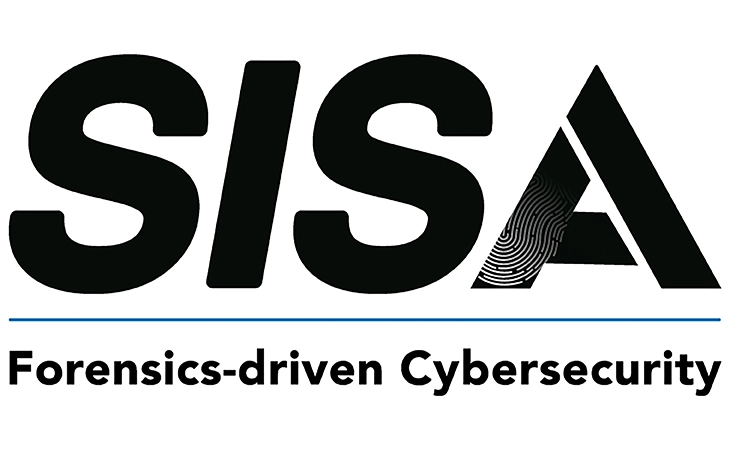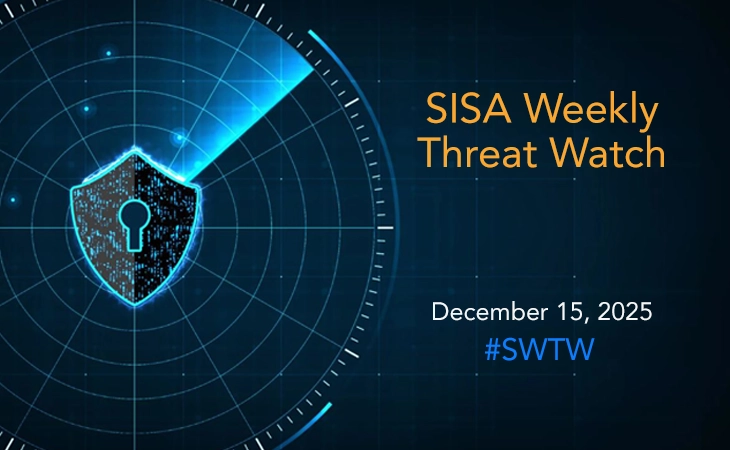Cyber Flashpoint: Critical Threats Emerge Amid Israel-Iran Escalation
- SISA Weekly Threat Watch -

In the past week, critical cybersecurity threats have emerged, with significant vulnerabilities being reported across various platforms. Recent cybersecurity incidents include:
- AsyncRAT and Skuld Stealer Delivered via Discord Invite Link Hijacking
- An Evolving ELF Malware Threatens Cloud Infrastructure with Stealth and Destruction
- Cyber Flashpoint: Critical Threats Emerging Amid Israel-Iran Escalation
- A Compromising Campaign Leveraging JSFireTruck Obfuscation for Malicious Redirections
- CVE-2025-5309: A Vulnerability in BeyondTrust RS/PRA that’s Exploitable Without Authentication
These developments underscore the urgent need for organizations to stay vigilant and apply security updates promptly.
SISA Weekly Threat Watch – our weekly feature brings to you a quick snapshot of all the major security vulnerabilities that posed a threat to organizations worldwide. These recurring actionable threat advisories will also provide information and recommendations that will help security teams take appropriate actions to defend against the latest and critical threats.
1. AsyncRAT and Skuld Stealer Delivered via Discord Invite Link Hijacking
A new cyber campaign is exploiting Discord’s expired vanity invite links to deliver AsyncRAT and a customized Skuld Stealer, primarily targeting crypto users. By hijacking these links, attackers redirect unsuspecting users to malicious servers, where they’re socially engineered through ClickFix tactics—tricked into copying and running PowerShell commands that kick off a multi-stage infection chain. The payloads, hosted on trusted platforms like GitHub, Pastebin, Bitbucket, and Discord, help the attackers stay under the radar. AsyncRAT provides full remote control, while Skuld steals sensitive data from browsers, Discord, and crypto wallets by replacing legitimate app files with trojanized clones. The campaign’s use of familiar platforms and convincing verification prompts makes it particularly deceptive. To defend against this, organizations should ramp up user awareness around malicious invite links and ClickFix-style social engineering, rotate or avoid vanity URLs where possible, and rely on robust EDR/XDR tools to detect PowerShell misuse and infostealer behavior. Monitoring outbound traffic to pastebins, code repositories, and Discord webhooks is equally critical, and Discord itself must be urged to allow vanity code reclamation and restrict abuse of its file-hosting and webhook features.
2. Evolving ELF Malware Threatens Cloud Infrastructure with Stealth and Destruction
A sharp rise in Linux ELF-based malware targeting cloud environments signals a maturing and aggressive shift in attacker behavior. Threat actors are now adapting traditionally Linux-focused tools—like backdoors, wipers, and remote access trojans—for use in modern cloud workloads, particularly where Linux dominates. These threats are becoming stealthier, using techniques like LD_PRELOAD hijacking and runtime injection into sshd, allowing them to blend into normal system behavior. Active malware families such as NoodleRAT, Winnti, SSHdInjector, Pygmy Goat, and AcidPour have been observed across real-world attacks in Asia-Pacific, often aiming at critical infrastructure, telecom, and government sectors. These families bring a range of capabilities—from reverse shells and credential theft to destructive wiping and deep persistence—often exploiting known vulnerabilities or container weaknesses.
Given this, cloud-focused organizations must double down on runtime protection, harden SSH services, and monitor for unusual binary executions or memory injections. It’s also critical to detect LD_PRELOAD misuse early, restrict outbound traffic from containers, and patch known vulnerabilities like those affecting firewalls or container runtimes.
3. Cyber Flashpoint: Critical Threats Emerge Amid Israel-Iran Escalation
Following Israel’s Operation Rising Lion on June 13, 2025, which targeted key Iranian military and nuclear assets, the fallout has rapidly escalated into the cyber realm. With limited kinetic response options, Iran is expected to intensify retaliatory cyber operations through state-backed APTs like APT35, APT34, and APT39, alongside a vast network of over 60 pro-Iranian hacktivist groups. These actors are targeting Israel’s government, military, and critical infrastructure using a blend of phishing, zero-day exploits, ransomware, and disinformation campaigns. Telegram chatter indicates rising hacktivist mobilization under banners like #OpIsrael and Arabian Ghosts, with some already claiming disruptions to Israeli systems.
To mitigate these threats, organizations must adopt real-time monitoring with advanced platforms like SISA’s ProACT MXDR, which integrates threat intelligence and provides multi-layered detection across complex infrastructures. Network segmentation, continuous patching, and AI-driven anomaly detection are essential, alongside robust awareness training to counter phishing. As disinformation gains momentum, proactive monitoring of social platforms and strong incident response playbooks will be critical to sustaining cyber resilience amid evolving geopolitical tensions.
4. Compromising Campaign Leveraging Obfuscation for Malicious Redirections
A massive web compromise campaign has infected over 269,000 websites using a highly obfuscated JavaScript technique dubbed JSFireTruck—a compact, character-limited variant of JSF*ck. This script, which relies on just six characters ([, ], (, ), !, +), exploits JavaScript quirks to construct functional code that’s nearly unreadable at first glance. Once embedded into a webpage, it checks if a visitor arrived via a search engine and silently redirects them to malicious destinations, potentially leading to malware downloads, exploit kits, or monetization scams. The attack’s stealth is reinforced by layered obfuscation, including String.fromCharCode, base64 encoding, and nested variable traps, making detection and manual analysis significantly harder.
To counter this, web administrators should regularly inspect their site’s source code for character-based obfuscation patterns and implement controls like Content Security Policy headers and Subresource Integrity. On the network front, defenders must deploy advanced filtering and DNS security tools to catch redirect patterns. Compromised environments should be isolated quickly, with deobfuscation and forensic analysis conducted to trace the infection path and root cause.
5. Vulnerability in BeyondTrust RS/PRA Exploitable Without Authentication
BeyondTrust has issued patches for a high-severity vulnerability (CVE-2025-5309) affecting its Remote Support (RS) and Privileged Remote Access (PRA) solutions. The flaw, a Server-Side Template Injection (SSTI) in the chat feature, allows unauthenticated attackers to remotely execute code on vulnerable servers. This stems from improper input sanitization within the chat’s template engine, making it possible to inject malicious commands that the server executes. Remote Support is particularly exposed, as exploitation doesn’t require authentication. Affected versions include RS and PRA builds prior to 24.2.2 and certain 24.2.x to 25.1.x versions without the specific HELP patches. Patched builds are now available and should be applied immediately. Cloud instances were secured by June 16, 2025, but on-premises users must update manually if auto-patching is disabled. Until then, enabling SAML authentication, disabling public-facing chat elements, and turning on session keys can reduce risk. Long-term, administrators should monitor server logs, limit public chat access, and routinely audit deployments for anomalies.
To get daily updates on the critical vulnerabilities being exploited by threat actors, subscribe to SISA Daily Threat Watch – our daily actionable threat advisories.
For a deeper understanding of how you can prevent these threats from affecting your organization, request a call to get in touch with our experts.
 USA
USA India
India APAC
APAC Middle East
Middle East Global
Global

 Facebook
Facebook Linkedin
Linkedin  X
X Youtube
Youtube








